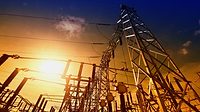Protecting assets, employees and reputation starts at the perimeter

Among the top threats to businesses are theft of property, theft of data and workplace violence. When it comes to preventing these commonplace scenarios, a fence can be the first step to designing an effective access control program.
By starting at the perimeter, entities can create a physical barrier that deters infiltration and denies entry. So, what kind of fencing offers an uncompromising solution? An astute option is a fence classified as high-security.
Several factors determine whether a fence is considered high-security, including the material it’s made from, how it’s constructed and the features that the construction enables. In addition, a strong perimeter solution should not pit form against function. Rather, it should emulate the beauty and power of a well-managed fortress, effectively demonstrating a positive company image. The right fence, therefore, protects the well-being of physical assets, data, employees and even the brand reputation of the organization.
The cheaper option won’t cut it
Too often, a facility’s designer will opt for a chain-link fence because they’re inexpensive, familiar and easy to install. Such solutions are not enduring options in high-security applications and have several disadvantages.
- Easy to climb. The links in chain-link fencing are just the right size to provide hand and footholds.
- Flimsy against intruders. Chain links are made of wire and can easily be cut by a cheap pair of wire cutters. This grants easy access to anyone looking to trespass without much planning or expense.
- Industrial appearance. Chain-link fencing is functional as a simple barrier and nothing more. It’s overtly industrial-looking and has a strong association with high-crime areas.
Chain-link fence manufacturers have offered add-ons to address some of these weaknesses, such as barbed or razor wire along the top of the fence to reduce the likelihood of somebody scaling the boundary. But these action steps don’t offer much in the way of aesthetics. A superior option is something both aesthetically appealing and heavy-duty.
Integral components of a high-security fence
The primary components of a high-security solution should be manufactured from uncompromising materials, such as steel.
High-security steel fences are robust in weight and physical appearance. They also typically have the vertical and horizontal components integrated, which makes it appear more difficult to cut through or remove sections of the fence. In addition, high-security fences consist of vertical pales rather than standard pickets. A pale is a roll-formed steel shape that is larger in size and gauge of steel than a picket. This creates a strong visual deterrent and makes it difficult to gain access to the property by using cutting tools. Typically, pales are spaced at 3-inches or 1 7/8-inch along a C-channel rail, which minimizes the gap between them. They also generally extend all the way to the ground to add structural stability, making it more difficult to access from underneath.
The rail is another critical component in a high-security fence, as its design is intended to not only withstand severe mid-span downforce, but also to prevent climbing. An added benefit? It can easily accommodate security cabling or lines for surveillance equipment.
A high-security designation lends to anti-climb and strength factor
In application, the materials and manufacturing process of a high-security steel fence lead to anti-climb functions. Namely, the combination of rail shape, pale spacing and pointed and curved tops limits a miscreant’s ability to scale the fence.
- The C-channel rail has a severely sloped upper side that is intended to inhibit a foot from fitting on top of the rail.
- The tops of the fences are curved, split or spear-shaped, which makes them dangerous to scale.
- The pales are spaced closer together with higher rails, which keeps the horizontal rails from being used as leverage.
Should an entity want enhanced strength for added peace of mind, builders can utilize a number of methods for reinforcement. For example, according to the Whole Building Design Guide, extra cement can be used to secure the vertical pieces during installation, adding strength. At gates or access points, structural elements such as a concrete deadman can offer desired reinforcement.
Fusion of function and form
A building’s exterior, namely the perimeter line, should also offer a positive first pass on the viability of the occupying entity. In a sense, the fencing solution should be aesthetically pleasing and powerful- looking, effectively demonstrating a strong brand reputation to employees and customers. After all, a secured area need not be safeguarded by an unattractive, overtly menacing product to be functional.
Similarly, a visually appealing high-security fence can convey the calculated forethought that went into designing a robust access-control program. As the first barrier of deterrence, a refined fencing option illustrates that the entity is well-managed, well-funded and a well-monitored machine. Put simply, it’s not a force to be reckoned with. In turn, unsolicited visitors will likely reconsider trespassing on the property.
Bringing it all together for an effective first line of defense
The buildings that house business, government and institutional operations represent extremely high investments, with value residing in employees, assets and brand reputation. And as a part of the broader access control system, a high-security fence can play a vital role in the system’s infrastructure. With this intention, enterprise security leaders will benefit greatly from adopting a superior high-security fencing solution.
Is your perimeter designed to withstand the threats?
This article originally ran in Security, a twice-monthly security-focused eNewsletter for security end users, brought to you by Security Magazine. Subscribe here.
Looking for a reprint of this article?
From high-res PDFs to custom plaques, order your copy today!





